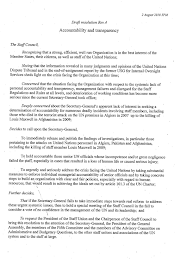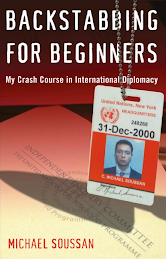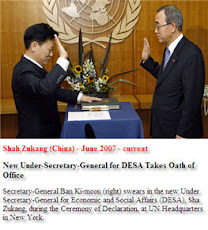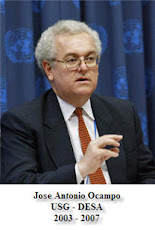CLICK HERE TO READ STORY ON NEWSWEEK
Why the U.S. military is the only organization that can effectively manage the chaos in Haiti. And other hard truths about the disaster
By John Barry Newsweek Web Exclusive
Jan 15, 2010
As the international relief effort descends on Haiti, there are certain truths that nobody wants to acknowledge publicly. The first is that few of those still buried under the rubble can be saved. There will, of course, be stories of miracle rescues. But the reality, says Fred Krimgold, earthquake expert at Virginia Tech, is that "a very, very high percentage of the people who are rescued are found in the first few hours. The drop-off is significant after that. By the time the rescue teams and sniffer dogs and fancy equipment arrive, you're really left with the exceptional situations, the freak survivals." Many of those lucky enough to be pulled from the rubble will die too, succumbing to what disaster-relief experts call "crush injuries" from the rubble that entombed them. The toxins these injuries release in the body typically overwhelm the kidneys. Without dialysis, the injured tend to die—and nobody brings dialysis machines to a disaster zone.
The other truth is that the only entity on the planet with the capacity to bring help to Haiti on the scale needed is the U.S. military. The United Nations will find it impolitic to admit this; the big international relief groups, proud of their noncombatant status, will shy from acknowledging it. But it is the reality.
Journalists in Port-au-Prince ask the persistent question: "Who's in charge?" The answer is a quiet-spoken U.S. Special Forces officer from a tiny township on the Kentucky River. Lt. Gen. P. K. (Ken) Keen is deputy commander of U.S. Southern Command, and the man tapped to run the American relief effort in Haiti. It's a task that will tax Keen's diplomatic as well as organizational skills as he navigates the politics of international disaster relief.
Formally, Keen—who is in Port-au-Prince—will take his orders from the U.S. ambassador to Haiti, Kenneth Merten. Formally, the official with lead responsibility within the Washington bureaucracy is the administrator of the U.S. Agency for International Development (USAID), Rajiv Shah—who's been in the job for all of one week. Formally, the aid from international donors is pulled together by the U.N. Office for the Coordination of Humanitarian Affairs.
But the reality is that what materials and assistance are delivered to Haiti, how much, and when, will depend almost wholly on a network of relationships established on the ground between the U.S. military, a handful of disaster experts from USAID, and five or six of the biggest NGOs already working in Haiti: World Vision, CARE, Save the Children, Oxfam, and one or two others. As experts from Europe arrive, they will be slotted into this network. In practice, these emergency relief workers are a global cadre; they know each other from years' together at one disaster scene after another. And the roles are clear. The relief workers figure out what's needed, and draw up their lists. The AID liaison staffers with the U.S. military prioritize the requests and sign off on them. The military brings the goods into the country. The big NGOs distribute them, with emergency access to U.S. government funds to hire local contractors.
It's a system built up over 20 years; and—belying the chaos on the streets—it works efficiently. There is even a how-to manual: FOG, it's inappropriately called, the Field Operations Guide, which was intended to be a pocket manual, but has now swollen to 378 pages of accumulated know-how.
But none of this can function except on the bedrock of U.S. military capability, as the first days of chaos in Haiti have again demonstrated. Haiti's communications were destroyed in the quake; the U.S. military's first task was to set up a new network. Supplies couldn't be flown into Port-au-Prince airport until the U.S. military had sent in airport repair and cargo-handling teams.
The port is unusable because many of the wharves are rubble and most of the cranes have collapsed. Heavy-lift helicopters flying off the carrier USS Carl Vinson are the only way of getting most supplies ashore. When the USS Bataan, one of the Marines' amphibious assault carriers, arrives off Haiti with the dock landing ship USS Fort McHenry, their hovercraft will take up the cargo-ferrying effort. To distribute relief supplies around the shattered country, only the U.S. military has the transport; many of the NGOs' vehicles were damaged in the quake. To keep order and reassure a frantic populace, a company of the 82nd Airborne is already there, and a 3,500-strong brigade will be in place over the weekend.
On Friday, the U.S. military was stepping up its leadership role. The Chairman of the Joint Chief of Staff, Adm. Mike Mullen, said that up to 10,000 U.S. troops would be operating in or near Haiti by Monday, with the possibility of more being added later. And the State Department said Haitian Prime Minister Jean-Max Bellerive signed a document turning over control of the Port-au-Prince airport to the U.S. government indefinitely. These are crucial steps in the right direction.
The U.S. military won't be welcome in Haiti for long. Ironically, one of the first signs of Haitian revival will, predictably, be protests at the American presence. For now, though, it's the American armed forces that stand between Haiti and utter collapse.
Find this article at http://www.newsweek.com/id/231103
Saturday, 16 January 2010
Put the Pentagon in Charge
Labels:
ban ki-moon,
Haiti,
Humanitarian,
OCHA,
Pentagon,
sha zukang,
susan rice,
United Nations,
US Government,
US State Department,
USUN
Subscribe to:
Post Comments (Atom)






















No comments:
Post a Comment